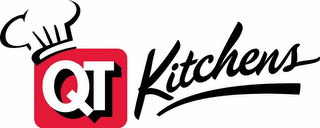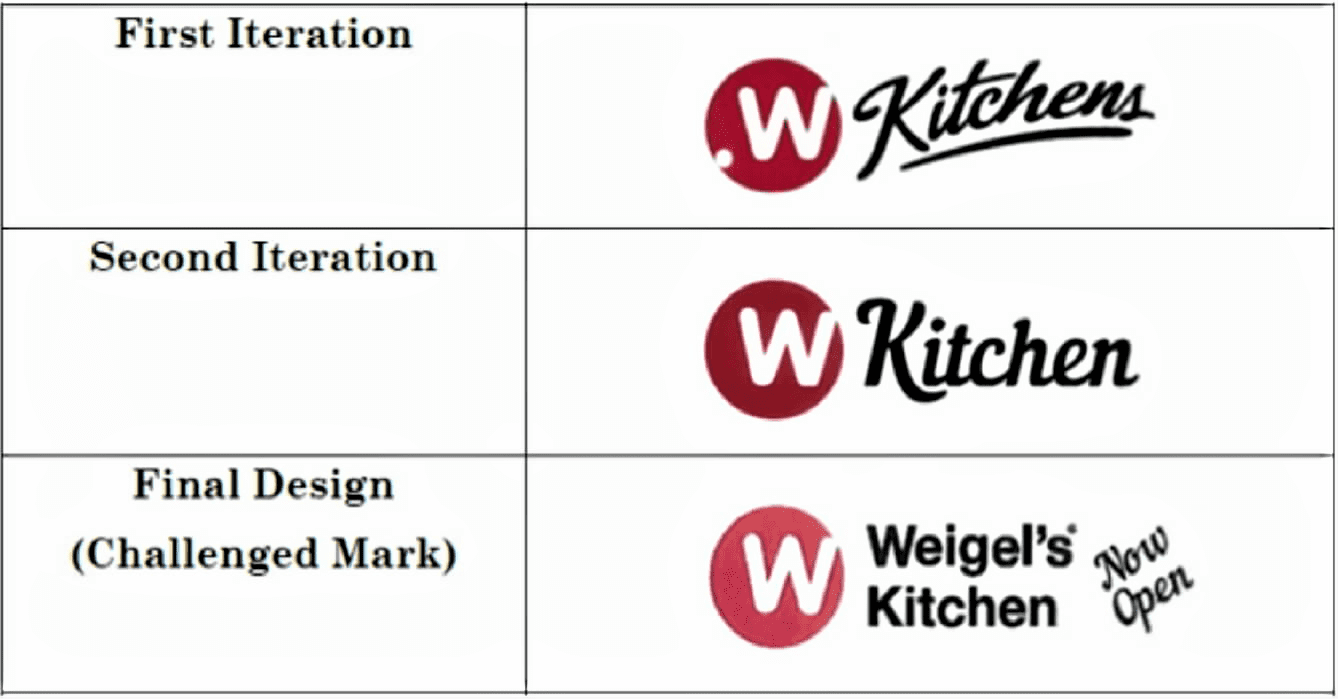In a January 8, 2021 decision1 affirming the United States Patent and Trademark Office Trademark Trial and Appeal Board’s (the “Board’s”) dismissal of appellant QuikTrip West, Inc.’s (“QuikTrip’s”) opposition to Weigel Stores, Inc.’s (“Weigel’s”) registration of the design mark “W WEIGEL’S KITCHEN NOW OPEN,” the Court of Appeals for the Federal Circuit shed some clarity on the standard for evaluating whether likelihood of confusion exists under the so-called DuPont test.2 The Federal Circuit held, inter alia, that there was no likelihood that consumers would confuse Weigel’s “W WEIGEL’S KITCHEN NOW OPEN” mark with QuikTrip’s registered design mark “QT KITCHENS,” because these marks differed in appearance, sound, connotation, and commercial impression—the first of the thirteen DuPont factors—and that the Board did not err in granting decisive weight to the dissimilarity of the marks under the first DuPont factor.3 QuikTrip West, Inc. v. Weigel Stores, Inc. solidifies the importance of the first DuPont factor, even when competing factors militate against its application, and clarifies the nature of the balancing test that a DuPont analysis requires.
The fact that the marks at issue in QuickTrip appear to be strikingly similar in appearance, and that QuikTrip and Weigel are businesses offering similar services, makes QuickTrip a decision of no small import. QuikTrip and Weigel both operate “combination gasoline and convenience stores,” and QuickTrip has served food in its stores since 2011.4 QuickTrip’s design mark, U.S. Reg. No. 4,118,738,5 consists of the letters “QT” in white on a red square background; the word “KITCHENS” in black and underlined in black; and a chef-style hat outlined in black located at the top left corner of the red square.6

Weigel began using the stylized mark “W KITCHENS” in 2014 to sell food in its stores, like QuikTrip.7 Subsequently, QuikTrip sent Weigel a cease-and-desist letter requesting that Weigel stop using the “W KITCHENS” mark because it was confusingly similar to QuikTrip’s registered “QT KITCHENS” mark.8 In response, Weigel modified its mark by changing the plural “KITCHENS” to the singular “KITCHEN,” altering the font, and adding the words “WEIGEL’S” and “NOW OPEN” to the design.9 QuikTrip continued to object to Weigel’s use of the word “KITCHEN” in its mark, in spite of these modifications.10 When Weigel applied to register the final iteration of its challenged design mark, which includes the altered font and the addition of the words “NOW OPEN,” QuickTrip filed an opposition pursuant to 15 U.S.C. § 1052(d), asserting likelihood of confusion.11

In evaluating whether a likelihood of confusion existed, the Board conducted the balancing test mandated by In re E. I. DuPont DeNemours & Co.12 This determination requires an analysis of the probative facts relevant to the thirteen factors set forth in DuPont,13 which are:
In applying the DuPont balancing test, the Board found that “the parties’ identical-in-part goods and related services, overlapping trade channels, overlapping classes of customers, and similar conditions of purchase pointed to a likelihood of confusion finding”; however, the “dissimilarity of the marks weighed against a likelihood of confusion,” and this factor was dispositive of the outcome.15 The Board acknowledged that while both marks include the word “KITCHEN(S),” customers likely would not “focus on that word for source indication because it is at least highly suggestive, if not descriptive.”16 Thus, the Board dismissed QuikTrip’s opposition.
The Federal Circuit agreed with the Board, focusing its analysis on the ultimate dissimilarity of the marks. The court rejected QuikTrip’s assertion on appeal that the Board “improperly dissected the marks when analyzing their similarity . . . ignored the substantial similarity created by the marks’ shared word KITCHEN(S) and gave undue weight to other dissimilar portions of the marks.”17 Weigel’s rejoinder that the Board “correctly compared the marks as a whole” was more convincing, because the Board “did not disregard the shared word KITCHEN(S)[] . . . it simply found that other, more distinct portions of the marks . . . eliminate any likelihood of confusion.”18
The court sided with Weigel, agreeing that “[i]t is not improper for the Board to determine that, ‘for rational reasons,’ it should give ‘more or less weight . . . to a particular feature of the mark’ provided that its ultimate conclusion regarding the likelihood of confusion ‘rests on [a] consideration of the marks in their entireties.’”19 The court found that the Board “was also entitled to afford more weight to the dominant, distinct portions of the marks—Weigel’s encircled W next to the surname Weigel’s and QuikTrip’s QT in a square below a chef’s hat—given their prominent placement, unique design, and color.”20 Citing In re Electrolyte Labs., Inc., the court emphasized that “[m]ore dominant features will, of course, weigh heavier in the overall impression of a mark.”21 The word “kitchens” is, comparatively, merely “descriptive,” and not enough to render the marks confusingly similar.22
Thus, despite what amounts to a superficial appearance of similarity, the Federal Circuit agreed with the Board in finding the marks at issue in QuikTrip West, Inc. v. Weigel Stores, Inc. to be just that—superficially similar, but not similar enough to create a likelihood of confusion.
777 South Flagler Drive
Phillips Point East Tower, Suite 1000
West Palm Beach, FL 33401